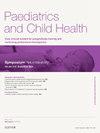小儿体位性心动过速综合征(POTS)的实用治疗方法
Q3 Medicine
引用次数: 0
摘要
体位性站立性心动过速综合征(POTS)是一种使人衰弱的疾病。它现在已经很有名了,但仍然知之甚少。这种疾病的多系统性质和充分治疗的困难使卫生专业人员和患者都感到沮丧。虽然没有已知的相关死亡率,但发病率相当高。了解病史是必要的,诊断测试是简单的,鉴别诊断是有限的。父母的互动和期望是管理的关键。POTS提供了一个将医学科学和艺术与同情和同理心结合起来的机会。本文概述了一种实用的方法来理解,诊断和治疗这种情况。讨论了站立的生理学,以及一些假定的引起POTS的病理生理机制。解释了子类型POTS作为辅助考虑管理的重要性。讨论了从保守措施到药物治疗的治疗策略。本文提供了处理这种情况的实用、可行的技巧。本文章由计算机程序翻译,如有差异,请以英文原文为准。
A pragmatic approach to paediatric postural orthostatic tachycardia syndrome (POTS)
Postural orthostatic tachycardia syndrome (POTS) is a debilitating condition. It is now quite well-known but still poorly understood. The multi-system nature of the condition and the difficulty in treating it adequately are discouraging for health professionals and patients alike. Whilst there is no known associated mortality, it has considerable morbidity. Knowledgeable history taking is essential, diagnostic tests are simple, differential diagnoses are limited. Parental interactions and expectations are key in management. POTS provides an opportunity to combine the science and art of medicine with compassion and empathy. This article outlines a pragmatic approach to understanding, diagnosing and treating this condition. The physiology of standing is discussed, as are some of the putative pathophysiological mechanisms responsible for POTS. The importance of sub-typing POTS as an aid to considered management is explained. Treatment strategies ranging from conservative measures to medications are discussed. Practical, workable tips for managing this condition are provided.
求助全文
通过发布文献求助,成功后即可免费获取论文全文。
去求助
来源期刊

Paediatrics and Child Health (United Kingdom)
Medicine-Pediatrics, Perinatology and Child Health
CiteScore
1.20
自引率
0.00%
发文量
70
 求助内容:
求助内容: 应助结果提醒方式:
应助结果提醒方式:


